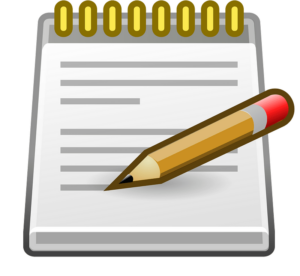In today’s competitive job market, a well-crafted resume can make all the difference between landing an interview and being overlooked. Gone are the days when a simple list of your work history and qualifications would suffice.
Employers now receive countless resumes for each job posting, and your resume needs to stand out from the crowd to grab their attention. So, let’s take a closer look at why a well-crafted resume is so crucial in today’s job market.
Your resume is your first impression.
Your resume is often the first interaction a potential employer has with you as a job candidate. It’s your chance to make a strong first impression and showcase your skills, qualifications, and achievements. A well-crafted resume that is easy to read, well-organized, and tailored to the job you’re applying for can instantly catch the eye of a hiring manager and make you stand out from other applicants.

Your resume highlights your unique value.
A well-crafted resume allows you to showcase your unique value as a job candidate. It’s an opportunity to highlight your skills, experiences, and accomplishments that make you a standout candidate for the job. Your resume should demonstrate how you can bring value to the employer and solve their problems. It’s your chance to market yourself effectively and show why you are the best fit for the position.
Your resume demonstrates your professionalism.
A well-crafted resume reflects your professionalism and attention to detail. It shows that you take your job search seriously and are willing to put effort into crafting a high-quality resume. Employers are looking for candidates who are detail-oriented, organized, and can effectively communicate their skills and qualifications. A sloppy or poorly-written resume can create a negative impression and hinder your chances of landing an interview.
Your resume aligns with applicant tracking systems (ATS).
Many companies now use applicant tracking systems (ATS) to scan resumes for keywords and qualifications before they even reach human eyes. A well-crafted resume that is optimized with relevant keywords and tailored to the job posting can increase your chances of passing through the ATS screening process. It’s essential to customize your resume for each job application to ensure it aligns with the job requirements and increases your visibility to potential employers.
Your resume sets you apart from the competition.
In today’s competitive job market, employers receive a flood of resumes for each job posting. To stand out from the competition, your resume needs to be unique and memorable.
A well-crafted resume that showcases your achievements, demonstrates your skills, and reflects your personality can make you stand out in a sea of generic resumes. It gives you an edge over other candidates and increases your chances of being invited for an interview.
Table of Contents
ToggleExpert Tips to Capture Potential Employers’ Attention

When it comes to job hunting, your resume is your first impression. It’s the document that introduces you to potential employers and determines whether you make it to the next stage of the hiring process or end up in the rejection pile. In today’s competitive job market, having a resume that stands out is crucial.
So, how can you create a resume that captures the attention of potential employers? Here are some expert tips to help you make your resume shine.
Tailor your resume to the job
One size does not fit all when it comes to resumes. It’s important to customize your resume for each job application. Carefully review the job description and requirements, and highlight the skills, qualifications, and experiences that align with the position. This shows that you’ve done your research and are genuinely interested in the specific job, which can make your resume stand out.
Highlight your achievements.
Don’t just list your job responsibilities, but also highlight your achievements and accomplishments. Did you exceed targets, receive awards, or lead successful projects? Quantify your achievements with specific numbers or percentages to showcase your impact and demonstrate your value as a potential employee.
Keep it clean and concise.
A cluttered or overly lengthy resume can be off-putting to employers. Keep your resume clean, easy to read, and concise. Use clear headings, bullet points, and appropriate formatting to make your resume visually appealing and easy to skim. Be selective in what you include and focus on the most relevant information to the job you’re applying for.
Showcase your unique value.
What sets you apart from other candidates? Highlight your unique value proposition in your resume. This can be your specialized skills, industry certifications, or unique experiences that make you stand out. Showcasing your unique value helps you differentiate yourself from other applicants and catch the attention of potential employers.

Use action verbs and keywords.
Use strong action verbs and keywords throughout your resume to create an impactful impression. Avoid using generic terms like “responsible for” and “managed,” and instead use action verbs like “achieved,” “initiated,” and “implemented” to demonstrate your proactive approach and accomplishments.
Additionally, use relevant keywords from the job description to pass through applicant tracking systems (ATS) and increase the chances of your resume being seen by human eyes.
Proofread and get feedback.
A simple typo or error can instantly tarnish your resume’s impression. Proofread your resume carefully to ensure there are no spelling, grammar, or formatting mistakes. It’s also a good idea to have someone else review your resume for feedback. Fresh eyes can catch mistakes you might have missed and provide valuable insights on how to improve your resume further.
Key Components of a Winning Resume
What are the key components of a resume that you need to include to unlock success? Let’s dive into the essential elements that make up a winning resume.

Contact Information
The first component of any resume is your contact information. This includes your name, professional email address, phone number, and LinkedIn profile URL. Make sure your contact information is accurate and up-to-date so that employers can easily reach out to you for further communication.
Summary/Profile Statement
A summary or profile statement is a brief introduction at the beginning of your resume that highlights your professional background and key qualifications. It provides a snapshot of your skills, experiences, and career goals, giving potential employers a quick overview of what you bring to the table.
Work Experience
Your work experience section is one of the most critical components of your resume. It should list your past employment history, including job titles, company names, dates of employment, and a concise description of your responsibilities and accomplishments in each role. Use bullet points and quantify your achievements whenever possible to make this section stand out.
Education
Include your educational background, starting with the highest level of education obtained. Include the name of the institution, degree earned, major or field of study, and graduation year. If you have relevant certifications or additional training, include them in this section as well.
Skills
Highlight your relevant skills in a dedicated skills section. This can include technical skills, language proficiency, software knowledge, or any other skills that are relevant to the job you are applying for. Be specific and provide examples to demonstrate your proficiency in each skill.
References
While it’s not necessary to include references on your resume, you can mention that “References are available upon request.” Make sure you have a list of professional references ready, and inform your references in advance that they may be contacted by potential employers.
A well-crafted resume should include key components such as contact information, a summary/profile statement, work experience, education, skills, and references. These elements help you present your qualifications in a clear and organized manner, making your resume more impactful and increasing your chances of landing an interview. Remember to customize your resume for each job application and proofread carefully for any errors. Good luck in crafting your winning resume!
Designing Your Resume: Best Practices for Formatting, Font, and Layout

Your resume is not just about the content, but also about how it’s presented. The formatting, font, and layout of your resume play a crucial role in creating a visually appealing and professional document that catches the attention of potential employers. Here are some best practices to keep in mind when it comes to designing your resume.
- Choose a Clean and Professional Font
The font you choose for your resume should be easy to read and professional in appearance. Stick to standard fonts such as Arial, Calibri, or Times New Roman, and avoid using overly decorative or flashy fonts that can distract from the content of your resume.
- Use Consistent Formatting
Consistency is key in resume formatting. Use the same formatting style for headings, subheadings, bullet points, and text throughout your resume. This creates a clean and organized look that is easy to follow. Use bold, italics, or underline selectively to highlight important information, and avoid excessive use of formatting that can make your resume look cluttered.
- Keep it Simple and Easy to Scan
Recruiters and hiring managers often spend only a few seconds scanning each resume, so it’s important to make yours easy to read at a glance. Use clear headings and subheadings to structure your resume, and use bullet points to list your skills, experiences, and accomplishments. Avoid large blocks of text that can be overwhelming and difficult to scan quickly.
- White Space is Your Friend
Don’t be afraid of white space on your resume. It helps to create a clean and visually appealing layout that makes your resume easy on the eyes. Leave enough white space between sections, and use margins of at least 0.5 inches to give your resume a balanced and professional look.
- Keep it Consistent with Your Personal Brand
Your resume should be consistent with your personal brand and the job you are applying for. If you are applying for a creative position, you may have more flexibility in terms of font and layout. However, for more traditional or corporate roles, stick to a clean and professional design. Ensure that your resume aligns with your overall personal brand and the image you want to portray to potential employers.

The formatting, font, and layout of your resume are essential elements in creating a professional and visually appealing document. Following best practices such as choosing a clean and professional font, using consistent formatting, keeping it simple and easy to scan, leveraging white space, and aligning with your personal brand can help you create a standout resume that grabs the attention of potential employers.
Remember to proofread your resume carefully for any errors and seek feedback from others to ensure it’s polished and ready to make a positive impression.
Using Powerful Action Verbs and Quantifiable Results in Your Resume
Your resume is not just a list of tasks you’ve performed, but also a showcase of your accomplishments and the impact you’ve made in your previous roles. One effective way to highlight your achievements is by using powerful action verbs and quantifiable results. Let’s explore how you can make your resume stand out by incorporating these elements.
- Choose Powerful Action Verbs
Action verbs are words that convey action and demonstrate your proactive approach to your work. Instead of using generic verbs like “managed” or “assisted,” opt for more powerful and specific verbs that capture the attention of the reader.
For example, instead of saying “managed a team,” you can use “led” or “orchestrated.” Other examples of powerful action verbs include “achieved,” “initiated,” “implemented,” “optimized,” “innovated,” and “streamlined.” These verbs convey a sense of accomplishment and showcase your ability to take initiative and make things happen.
- Quantify Your Results
Quantifying your accomplishments adds credibility to your resume and helps potential employers understand the magnitude of your achievements. Instead of making vague statements, use specific numbers, percentages, or other measurable data to highlight your results. For example, instead of saying “increased sales,” you can say “increased sales by 25% within six months.”
Other examples of quantifiable results could include “reduced costs by 15%,” “implemented a process that saved 50 hours per month,” or “led a team that achieved a 90% customer satisfaction rate.” Quantifying your achievements demonstrates your ability to deliver tangible results and adds weight to your accomplishments.
- Customize for Each Role
When highlighting your accomplishments in your resume, it’s important to tailor them to each specific role you’re applying for. Review the job description and requirements, and identify the key skills and qualifications the employer is seeking. Then, incorporate relevant action verbs and quantifiable results that demonstrate how you meet those requirements. This customization shows that you’ve done your research and are a good fit for the position.
- Be Concise and Clear
When using powerful action verbs and quantifiable results, it’s important to be concise and clear in your language. Use bullet points to make your accomplishments easy to read and scan, and avoid using jargon or complex language that may confuse the reader. Keep your sentences short and focused, and use active voice to convey a sense of ownership and accountability.
- Proofread and Edit
Finally, as with any section of your resume, be sure to proofread and edit your accomplishments section carefully. Check for any grammatical errors, typos, or inconsistencies in your language. Make sure your quantifiable results are accurate and verifiable. It’s a good idea to have someone else review your resume as well to get fresh eyes and feedback.
Using powerful action verbs and quantifiable results in your resume can make a significant impact and help you stand out from the competition.
By choosing powerful action verbs, quantifying your achievements, customizing for each role, being concise and clear, and proofreading and editing diligently, you can create a resume that highlights your accomplishments and impresses potential employers.
How to Demonstrate Your Impact in Previous Employers or Projects on Your Resume

Employers are interested in seeing how you made a difference and contributed to the success of your previous roles. Here are some tips on how to effectively demonstrate your impact and value on your resume.
Highlight Your Accomplishments
One of the best ways to demonstrate your value is by highlighting your accomplishments in your previous roles. Instead of simply listing your duties, focus on what you achieved and the results you delivered. For example, instead of saying “managed a team,” you can say “led a team that exceeded sales targets by 20%.” Be specific and use measurable results to quantify your achievements. This shows potential employers that you have a track record of success and can add value to their organization.
Describe Your Contributions
In addition to listing your accomplishments, describe how you contributed to the success of your previous employers or projects. Explain the strategies or initiatives you implemented, the challenges you overcame, and the solutions you provided. This gives potential employers a clear understanding of your problem-solving skills and your ability to add value through your expertise and experience.
Use Action Verbs
When describing your contributions, use strong and impactful action verbs that convey action and initiative. For example, instead of saying “helped with,” you can use “developed,” “implemented,” “streamlined,” “optimized,” “innovated,” or “spearheaded.” These action verbs convey a sense of proactivity and showcase your ability to take charge and make a difference.
Provide Context
When demonstrating your value, it’s important to provide context to help potential employers understand the significance of your contributions. Explain the scope of your responsibilities, the size of the team or project you worked on, and any relevant metrics or benchmarks. This gives employers a better understanding of the context in which you added value and the scale of your impact.
Tailor to the Job
Just like with any other section of your resume, it’s crucial to tailor your value demonstration to the job you’re applying for. Review the job description and requirements, and identify the key skills and qualifications the employer is seeking. Then, highlight the accomplishments and contributions that are most relevant to the position. This customization shows that you understand the needs of the employer and can provide value in the specific role you’re applying for.
Showcasing how you added value to previous employers or projects is a crucial aspect of a successful resume. By highlighting your accomplishments, describing your contributions, using action verbs, providing context, and tailoring to the job, you can effectively demonstrate your impact and value to potential employers.
Remember to be specific, measurable, and relevant in your descriptions, and use language that conveys your proactivity and expertise.
How to Make Your Resume More Impactful with Relevant Keywords and Industry-Specific Language
In today’s competitive job market, having a well-crafted resume that stands out is essential. One often overlooked but highly effective strategy is incorporating relevant keywords and industry-specific language into your resume.

This can help your resume get noticed by applicant tracking systems (ATS) used by many employers, as well as resonate with hiring managers and recruiters. Here are some best practices on how to make your resume more impactful by using keywords and industry-specific language.
Research and Identify Relevant Keywords
Start by thoroughly researching the job description and requirements of the positions you are applying for. Look for keywords that are commonly used in the industry or profession.
These can include technical skills, industry jargon, and specific qualifications. For example, if you are applying for a marketing role, relevant keywords might include “digital marketing,” “SEO,” “social media,” “analytics,” etc. Make a list of these keywords and prioritize the most important ones for the specific job you are applying for.
Incorporate Keywords Strategically
Once you have identified the relevant keywords, incorporate them strategically into your resume. This can be done in various sections, such as the summary/profile statement, work experience, skills, and education. Avoid simply listing the keywords without context, as this can come across as forced and unnatural. Instead, use them in meaningful sentences and bullet points that demonstrate how you have applied these skills or qualifications in your previous roles. This shows that you have hands-on experience and expertise in these areas.
Use Industry-Specific Language
In addition to keywords, using industry-specific language can also make your resume more impactful. This includes using terminology and jargon that are commonly used in the industry or profession you are applying for.
This can help you connect with the reader, demonstrate your understanding of the industry, and showcase your expertise.
However, be mindful of not overusing jargon or technical language, as it may not be easily understood by everyone. Strike a balance between using industry-specific language and ensuring that your resume remains clear and easy to comprehend.
Tailor to the Job
Just like with any other aspect of your resume, it’s crucial to tailor your use of keywords and industry-specific language to the job you’re applying for. Carefully review the job description and requirements, and ensure that your resume reflects the specific keywords and language used in the posting. This not only increases your chances of getting through ATS but also shows the employer that you have taken the time to customize your resume for their specific needs.
Be Genuine and Authentic
While it’s important to incorporate keywords and industry-specific language into your resume, it’s equally important to be genuine and authentic in your writing. Avoid stuffing your resume with keywords or using industry-specific language that you are not familiar with. Employers are looking for candidates who are genuine and can back up their claims with real experience and expertise. So, make sure that your use of keywords and industry-specific language aligns with your actual skills, qualifications, and experience.
In conclusion, incorporating relevant keywords and industry-specific language can significantly impact the effectiveness of your resume.
By strategically using keywords, incorporating industry-specific language, tailoring to the job, and being genuine and authentic, you can create a resume that resonates with employers and increases your chances of getting noticed in today’s competitive job market.
Remember to thoroughly research and identify relevant keywords, use them strategically in context, and customize your resume for each job application.
How to Identify Skills that Set You Apart from Other Candidates

Your unique combination of talents and abilities can make a significant impact on potential employers and increase your chances of landing that dream job. Here are some expert tips on how to identify your strengths and skills and showcase them in your resume.
Reflect on Your Past Experiences
Start by reflecting on your past experiences, both professional and personal. Think about the tasks and responsibilities you have excelled at, the achievements you have accomplished, and the feedback you have received from supervisors, colleagues, and clients.
Consider the skills you have developed in these experiences, such as leadership, communication, problem-solving, project management, and technical skills. Make a list of these strengths and skills, and prioritize the ones that are most relevant to the job you are applying for.
Self-Assessment and Self-Awareness
Self-assessment and self-awareness are crucial in identifying your strengths and skills. Take the time to analyze your own abilities objectively and honestly. Consider your natural talents, interests, and passions. What activities do you enjoy the most? What tasks do you excel at? What skills come naturally to you? Reflect on your unique qualities and strengths that make you stand out from others. It could be your ability to think critically, your creativity, your adaptability, or your ability to work well in a team. Be honest with yourself and identify the skills that you possess and that set you apart.
Seek Feedback from Others
Another valuable way to identify your strengths and skills is to seek feedback from others. Ask for feedback from trusted colleagues, mentors, or supervisors who can provide you with an objective perspective on your strengths and skills.
They may point out qualities and skills that you may not have recognized in yourself. Their input can be invaluable in identifying your unique strengths and skills that set you apart from other candidates.
Match Your Strengths and Skills to the Job Requirements
Once you have identified your strengths and skills, carefully review the job description and requirements of the position you are applying for. Match your strengths and skills to the job requirements and tailor your resume accordingly.
Highlight your strengths and skills in the summary/profile statement, work experience, skills, and education sections of your resume. Use specific examples and accomplishments that demonstrate how you have applied these strengths and skills in your previous roles. This will show potential employers that you have the abilities and qualities they are looking for and that set you apart from other candidates.
Be Authentic and Genuine
Finally, it’s crucial to be authentic and genuine in showcasing your strengths and skills in your resume. Avoid exaggerating or embellishing your abilities, as it can backfire during interviews or on the job.
Employers value honesty and integrity, so be truthful and transparent about your strengths and skills. Focus on highlighting the qualities and skills that genuinely set you apart from other candidates and align with your actual abilities and experiences.
In conclusion, identifying and showcasing your strengths and skills in your resume can make a significant difference in setting you apart from other candidates. Take the time for self-assessment, seek feedback from others, match your strengths and skills to the job requirements, and be authentic and genuine in your resume.
By highlighting your unique talents and abilities, you can create a compelling resume that captures the attention of potential employers and increases your chances of success in the competitive job market.
Showcasing Your Technical, Soft, and Transferable Skills in Your Resume

It’s essential to not only highlight your work experience and education but also showcase your skills. Among the various types of skills, three key categories to focus on are technical skills, soft skills, and transferable skills.
These skills are highly relevant to the job you are applying for and can make a significant impact on potential employers. Here are some expert tips on how to effectively showcase these skills in your resume.
Technical Skills
Technical skills refer to your expertise in using specific software, tools, technologies, or equipment that are relevant to the job you are applying for. These skills are highly valued in technical fields such as IT, engineering, data analysis, programming, and other specialized industries.
When showcasing your technical skills in your resume, be specific and provide concrete examples of how you have utilized these skills in your previous roles.
Mention any certifications or training you have obtained related to these technical skills. If possible, quantify your achievements or projects that demonstrate your proficiency in using these technical skills.
Soft Skills
Soft skills, also known as interpersonal skills or people skills, are non-technical skills that are valued in almost every industry and job. These skills include communication, teamwork, leadership, problem-solving, adaptability, time management, and others.
Soft skills are important because they demonstrate your ability to work effectively with others, handle challenges, and contribute positively to the work environment. To showcase your soft skills in your resume, provide examples of how you have demonstrated these skills in your previous roles.
You can mention specific achievements, projects, or situations where you have effectively used your soft skills to achieve results or overcome challenges. Highlighting your soft skills can give potential employers a sense of your personality, work style, and cultural fit with their organization.
Transferable Skills
Transferable skills are skills that can be applied to different roles or industries, regardless of your specific job title or background. These skills include critical thinking, problem-solving, communication, leadership, adaptability, and others.
Transferable skills are highly valued because they indicate your ability to learn, adapt, and thrive in different work environments. When showcasing your transferable skills in your resume, focus on the skills that are most relevant to the job you are applying for.
Provide examples of how you have applied these skills in different roles or industries, and how they have contributed to your overall success. Highlighting your transferable skills can show potential employers that you have the versatility and adaptability to excel in their organization.
Enhancing Your Resume with Certifications, Awards, and Accolades

When it comes to creating a standout resume, it’s important to go beyond the basic information of your work experience and education.
Including certifications, awards, and accolades in your resume can greatly enhance your qualifications and make you stand out from other candidates.
These additional achievements can demonstrate your expertise, dedication, and recognition in your field. Here are some expert tips on how to effectively incorporate certifications, awards, and accolades into your resume.
Certifications
Certifications are professional credentials obtained by completing specific training or passing exams in a particular field or industry. They can validate your expertise and knowledge in a specific area and showcase your commitment to professional development.
When including certifications in your resume, make sure to list them prominently under a dedicated section or within the relevant work experience section. Include the full name of the certification, the certifying organization, and the date of certification.
If the certification is well-known or highly relevant to the job you are applying for, it can catch the attention of potential employers and strengthen your qualifications.
Awards and Accolades
Awards and accolades are recognition of your outstanding achievements, contributions, or performance in your field. They can range from industry awards, employee recognition, customer testimonials, or any other type of recognition that showcases your accomplishments.
When including awards and accolades in your resume, highlight them in a separate section or within the relevant work experience section. Mention the name of the award, the awarding organization, the date of the award, and a brief description of why you received the award.
If possible, quantify the impact or results of your achievements that led to the award. Including awards and accolades in your resume can demonstrate your exceptional abilities and validate your skills and accomplishments.
Relevance and Currency
When including certifications, awards, and accolades in your resume, ensure that they are relevant to the job you are applying for and add value to your qualifications. Consider the industry, job requirements, and the level of the position you are applying for. Including certifications, awards, and accolades that are not relevant or outdated may dilute the impact of your resume. Keep your certifications, awards, and accolades updated and relevant to demonstrate your commitment to professional growth and staying current in your field.
In conclusion, including certifications, awards, and accolades in your resume can significantly enhance your qualifications and make you stand out from other candidates in a competitive job market.
Be selective, relevant, and specific when incorporating these additional achievements in your resume. Highlight the impact, results, and recognition you have received to demonstrate your expertise, dedication, and exceptional performance.
By showcasing your certifications, awards, and accolades in your resume, you can increase your chances of success and impress potential employers with your qualifications.
Why Your Online Presence Matters in Today’s Job Search

In today’s digital era, the importance of online presence cannot be overstated, especially when it comes to job search and career advancement. Gone are the days when a resume and cover letter alone would suffice.
Employers and recruiters now turn to the internet to research and evaluate candidates, making your online presence a crucial aspect of your job search strategy. Here are some compelling reasons why having a strong online presence is vital in today’s competitive job market.
First Impressions Matter
Your online presence is often the first impression employers or recruiters have of you. Before even meeting you in person or reviewing your resume, they may conduct a quick online search to learn more about you. Your social media profiles, personal website, and other online assets can shape their perception of your professionalism, expertise, and suitability for the job. A well-crafted online presence can make a positive impression and increase your chances of being shortlisted for an interview.
Showcase Your Skills and Expertise
Your online presence provides a platform to showcase your skills, expertise, and accomplishments beyond your resume. You can leverage social media platforms like LinkedIn to create a compelling professional profile, share relevant content, and connect with industry professionals. You can also create a personal website or blog to highlight your portfolio, projects, or testimonials. By showcasing your skills and expertise online, you can demonstrate your qualifications and differentiate yourself from other candidates.
Expand Your Network
Building a strong professional network is critical for career success, and your online presence can help you expand your network. Social media platforms like LinkedIn allow you to connect with professionals in your industry, join relevant groups, and engage in discussions.
You can also participate in online forums, webinars, and industry events to network with like-minded professionals. By expanding your network online, you can tap into hidden job opportunities, gain insights about the job market, and establish valuable connections that can lead to referrals or job offers.
Demonstrate Your Digital Savvy
In today’s digital age, employers value candidates who are digitally savvy and can adapt to the evolving business landscape. Having a strong online presence demonstrates your familiarity with digital tools, social media, and online communication.
It also showcases your ability to effectively manage your online reputation, maintain professional etiquette, and engage with online communities. In a competitive job market, a strong online presence can set you apart as a tech-savvy candidate who can thrive in the digital age.
Stay Relevant and Visible
In today’s fast-paced job market, staying relevant and visible is crucial for career success. An active and well-maintained online presence can help you stay visible to potential employers, recruiters, and industry peers.
Regularly updating your LinkedIn profile, sharing relevant content, and engaging in online discussions can position you as an active and knowledgeable professional in your field. It can also help you stay updated with industry trends, news, and opportunities, keeping you relevant and competitive in your job search.
Having a strong online presence is no longer an option but a necessity in today’s job search. It can help you make a positive first impression, showcase your skills and expertise, expand your network, demonstrate your digital savviness, and stay relevant and visible in a competitive job market.
Take the time to carefully curate your online presence, optimize your social media profiles, and engage in relevant online activities to boost your chances of job search success. Remember, your online presence is a powerful tool that can significantly impact your career prospects in the digital age.
Tips for Optimizing Your LinkedIn Profile and other social media platforms

In today’s digital age, social media has become an essential tool for professionals to build and maintain their online presence. Among various platforms, LinkedIn stands out as the go-to platform for professional networking, job searching, and career development.
However, it’s not just about LinkedIn; other professional social media accounts such as Twitter, Facebook, and Instagram can also play a role in shaping your online professional brand.
Here are some valuable tips for optimizing your LinkedIn profile and other professional social media accounts to enhance your online presence and boost your career prospects.
Choose a Professional Profile Picture
Your profile picture is the first visual impression that potential employers or connections will have of you. Make sure to choose a high-quality, professional-looking photo that represents your personal brand and aligns with your industry. Dress appropriately and avoid using overly casual or unprofessional photos. A clear headshot with a friendly, approachable expression is ideal for creating a positive impression.
Craft a Compelling Headline and Summary
Your headline and summary are crucial elements of your LinkedIn profile. Use your headline to highlight your expertise, industry, and unique value proposition. Craft a compelling summary that tells your professional story, highlights your achievements, and showcases your skills and experience. Be concise, yet impactful, and use industry-specific keywords to enhance your profile’s visibility in search results.
Customize Your Profile URL
LinkedIn allows you to customize your profile URL, which is the web address of your profile. Customize it with your name or a professional variation to make it easy for others to find and remember your profile. A clean and personalized URL looks more professional and is easier to share on your resume, email signature, or business cards.
Showcase Your Skills and Experience
Make sure to highlight your skills, work experience, and education on your profile. Use bullet points and concise language to describe your roles, responsibilities, and achievements in your work experience section. Include relevant keywords to optimize your profile for search results. Use the “Projects” and “Publications” sections to showcase any relevant projects or publications you have worked on.
Engage in Relevant Content
One of the best ways to optimize your LinkedIn profile and other professional social media accounts is by engaging in relevant content. Share and comment on industry-related articles, news, and discussions to demonstrate your expertise and actively participate in your professional community. This can help you establish yourself as a thought leader and expand your network.
Request Recommendations and Endorsements
LinkedIn allows you to request recommendations and endorsements from your connections. Ask for recommendations from colleagues, supervisors, or mentors who can speak to your skills and expertise. Endorse others for their skills and request endorsements in return. Recommendations and endorsements can add credibility to your profile and enhance your professional reputation.
Keep Your Profile Up-to-Date
Regularly review and update your LinkedIn profile and other professional social media accounts to keep them current. Add new skills, experiences, and certifications as you acquire them. Keep your contact information, job titles, and professional summary up-to-date. An updated profile shows that you are actively engaged and committed to your professional development.
Maintain Professional Etiquette
Remember to maintain professional etiquette on all your professional social media accounts. Avoid posting controversial or inappropriate content that could reflect poorly on your professional brand. Be respectful in your interactions with others, respond to messages and inquiries promptly, and use professional language and tone in all your communications.
Optimizing your LinkedIn profile and other professional social media accounts is essential for building and maintaining a strong online professional brand. Follow these tips to create a compelling profile, engage in relevant content, and showcase your skills and expertise.
With a well-optimized online presence, you can enhance your chances of being discovered by potential employers, recruiters, or industry peers, and elevate your career prospects. Remember to always maintain a professional tone and etiquette in your online interactions, and regularly update your profiles to reflect your current skills and experiences.
By leveraging the power of social media, you can enhance your online presence and make a positive impression on your professional network.

In addition to LinkedIn, consider other professional social media platforms that are relevant to your industry or field. For example, if you are in a creative industry, platforms like Instagram or Behance can be great places to showcase your portfolio and connect with other professionals in your field. Twitter can be useful for staying updated with industry news and trends, and engaging in conversations with industry influencers.
Finally, don’t forget to leverage the power of your online presence beyond social media. If you have a professional website or blog, make sure it is up-to-date and showcases your skills, experience, and achievements. Include a link to your website or blog in your social media profiles to direct interested parties to more detailed information about you and your work.
Also read 12 Proven Strategies to Improve Your LinkedIn Profile
Managing Your Online Reputation and Ensuring Consistency Between Your Resume and Online Profiles
In today’s digital age, your online presence plays a crucial role in your professional reputation. As you job search and network, potential employers, recruiters, and colleagues may search for you online to learn more about you. It’s essential to ensure that your online reputation aligns with the image you want to portray professionally.
This includes maintaining consistency between your resume and online profiles. In this article, we will discuss the importance of managing your online reputation and ensuring consistency between your resume and online profiles, along with some best practices.
Why is managing your online reputation important?
Your online reputation is how you are perceived by others online, and it can greatly impact your career prospects. A positive online reputation can open doors to new opportunities, while a negative one can hinder your chances of landing a job or advancing in your career.
Hiring managers and recruiters often research candidates online to gain insights into their qualifications, experience, and professionalism. Inconsistent or misleading information between your resume and online profiles can raise red flags and negatively impact your credibility.
Consistency between your resume and online profiles
One crucial aspect of managing your online reputation is ensuring consistency between your resume and online profiles. Your resume is typically the first point of contact with potential employers, and your online profiles, such as LinkedIn, serve as an extension of your resume. It’s crucial to maintain consistency in the information presented on both platforms to create a cohesive and professional image.
Here are some best practices to ensure consistency between your resume and online profiles:
Use the same information
Ensure that your contact information, including your name, email address, and phone number, is consistent on your resume and online profiles. Use the same professional email address and phone number to maintain consistency and avoid confusion.
Match your summary/profile statement
Your resume and online profiles should have a consistent summary or profile statement that highlights your skills, experience, and career objectives. Avoid discrepancies or contradictions between your resume and online profiles’ summary or profile statement.
Align your work experience and education
Your work experience and education sections on your resume and online profiles should match. Include the same job titles, company names, dates of employment, and responsibilities on both platforms. Similarly, ensure that your education details, including the school name, degree, and graduation year, are consistent.
Highlight your skills consistently
If you include a skills section on your resume and online profiles, ensure that the skills listed are consistent. Use the same keywords and prioritize the skills that are most relevant to your career goals and the job you are seeking.
Keep your professional image consistent
Your profile picture and overall professional image should be consistent across your resume and online profiles. Choose a professional profile picture that reflects your industry and portrays you in a positive and appropriate manner. Avoid using unprofessional or inconsistent images that may impact your online reputation negatively.
Managing your online reputation
Apart from maintaining consistency between your resume and online profiles, it’s also crucial to manage your online reputation proactively. Here are some tips for managing your online reputation:

Regularly Google yourself
Conduct regular searches of your name on search engines to see what information comes up. If you find any inaccurate or misleading information, take steps to correct it.
Review your social media profiles
Review your social media profiles, including Facebook, Twitter, Instagram, and any other platforms where you have a presence. Ensure that your privacy settings are appropriately configured and that you have removed any unprofessional or inappropriate content.
Monitor your online mentions: Set up Google alerts or use online monitoring tools to receive notifications whenever your name or relevant keywords are mentioned online. This will help you stay updated with what’s being said about you and take appropriate actions if needed.
Be mindful of your public posts
Be mindful of what you post on social media and other online platforms. Avoid sharing controversial, offensive, or inappropriate content that may negatively impact your professional image. Remember that potential employers and colleagues may come across your posts, even if you think they are private.
Engage in professional networking
Actively engage in professional networking on platforms like LinkedIn. Connect with industry professionals, participate in relevant discussions, and share valuable content to enhance your online presence and build a positive reputation.
Seek endorsements and recommendations
Request endorsements and recommendations from former colleagues, supervisors, or clients on LinkedIn. These endorsements and recommendations can add credibility to your online profile and showcase your skills and achievements.
Respond professionally to online feedback
If you receive feedback or comments on your online profiles, respond professionally and diplomatically, regardless of whether it is positive or negative. Avoid engaging in arguments or heated discussions, as this can reflect poorly on your professional image.
In today’s digital world, managing your online reputation and ensuring consistency between your resume and online profiles are crucial for career success.
Potential employers, recruiters, and colleagues often research candidates online to gain insights into their qualifications and professionalism. By following the best practices mentioned in this article, you can enhance your online presence, build a positive reputation, and align your resume and online profiles, creating a cohesive and professional image.
Be proactive in managing your online reputation, be mindful of what you post online, and engage in professional networking to showcase yourself as a qualified and reputable candidate in the job market.
Proofreading for Grammar, Spelling, and Formatting Errors

As you strive to create an impressive resume that captures the attention of potential employers, don’t overlook the importance of proofreading. Proofreading is a crucial step in the resume writing process that ensures your resume is free of grammar, spelling, and formatting errors.
These errors can quickly diminish the impact of your resume and create a negative impression on employers. In this article, we will explore the key reasons why proofreading is essential for your resume and provide some best practices to help you ensure a flawless final product.
Why is Proofreading Important?
Professionalism: Your resume is a reflection of your professionalism and attention to detail. Grammar, spelling, and formatting errors can convey a lack of attention to detail and professionalism, which can negatively impact your chances of being considered for a job.
Clarity and Accuracy: A resume with errors can be confusing and difficult to read. Employers may not have the patience or time to decipher unclear sentences or incorrectly spelled words. A resume that is clear, accurate, and error-free is more likely to be well-received and make a positive impression.
Credibility: Your resume serves as a marketing tool to showcase your qualifications and skills. Errors can erode your credibility and undermine the trust of potential employers. A resume that is free of errors enhances your credibility and portrays you as a competent and reliable candidate.
Best Practices for Proofreading Your Resume
Take a Break: After completing your resume, take a break and come back to it with fresh eyes. This will help you approach the proofreading process with a clear and unbiased perspective.
Use Spell Check and Grammar Tools: Utilize the spell check and grammar tools available in word processing software to identify and correct any glaring errors. However, don’t rely solely on these tools, as they may not catch all mistakes.
Read Aloud: Read your resume aloud to yourself, as this can help you spot any awkward sentences, inconsistencies, or missing words that you may have missed when reading silently.
Double-Check Formatting: Pay close attention to formatting, including font, spacing, and alignment. Make sure headings, bullet points, and other elements are consistent throughout your resume.
Enlist a Fresh Set of Eyes: Ask a trusted friend, family member, or colleague to review your resume for errors. Another person may spot mistakes that you have missed, as they bring a fresh perspective.
Take Your Time: Proofreading requires patience and attention to detail. Take your time to thoroughly review each section of your resume, and be meticulous in checking for errors.
Incorporating these best practices into your proofreading process can help you ensure that your resume is error-free, professional, and effective in capturing the attention of potential employers.
Conclusion
Proofreading is a critical step in the resume writing process that should not be overlooked. It helps ensure that your resume is free of grammar, spelling, and formatting errors, and conveys a professional image.
By following the best practices mentioned in this article, you can enhance the accuracy, clarity, and credibility of your resume, increasing your chances of success in today’s competitive job market. Take the time to thoroughly proofread your resume and make it flawless, as it can be the key to securing your dream job.
How Peers, Mentors, and Professional Resume Writers Can Help Improve Your Resume
Creating an effective resume is a crucial step in your job search journey. It’s a document that showcases your skills, qualifications, and experiences to potential employers. However, crafting a compelling resume can be challenging, and it’s important to seek feedback to ensure that your resume is impactful and presents you in the best light

Here, we will explore the benefits of getting feedback from peers, mentors, or professional resume writers, and how their insights can help you improve your resume.
Peers
Your peers can be valuable resources for feedback on your resume. They may have similar career goals or experiences and can provide fresh perspectives on your resume’s content, formatting, and overall presentation. Peer feedback can help you identify areas that may need improvement and provide suggestions for making your resume more effective.
Mentor
Mentors, whether from your professional field or a related industry, can offer valuable feedback on your resume.
Mentors can provide guidance on aligning your resume with industry standards, tailoring it to specific job opportunities, and highlighting relevant skills and experiences. Mentors can also share insights on what employers are looking for in resumes and provide recommendations for improvements.
Professional Resume Writers
Hiring a professional resume writer can be a worthwhile investment. These experts are well-versed in resume writing best practices, current industry trends, and can provide customized feedback based on your unique career goals. Professional resume writers can help you craft a resume that is visually appealing, concise, and effectively communicates your value proposition to potential employers.
How to Seek Feedback
Be Open to Feedback
Approach seeking feedback with an open mind and a willingness to accept constructive criticism. Remember that the goal is to improve your resume, not to receive praise. Be receptive to different perspectives and suggestions for improvement.
Provide Clear Instructions
When seeking feedback, provide specific instructions on what areas you would like input on. For example, you may want feedback on the overall structure, content, formatting, or specific sections of your resume. This will help ensure that you receive feedback that aligns with your goals.
Seek Diverse Perspectives
Seek feedback from a variety of sources to get well-rounded insights. Peers, mentors, and professional resume writers can each offer unique perspectives and insights based on their experiences and expertise. Consider seeking feedback from individuals with different backgrounds, industries, or levels of expertise.
Take Action on Feedback
After receiving feedback, take the time to implement suggested changes. Revise your resume accordingly and use the feedback as a guide to improve your resume’s content, formatting, and overall presentation. Keep in mind that feedback is a valuable opportunity for growth and improvement.
Follow up with Thank You
Show appreciation to those who provide feedback by expressing gratitude and acknowledging their input. This will demonstrate professionalism and may encourage them to provide feedback in the future.
In Conclusion
Seeking feedback from peers, mentors, or professional resume writers can greatly improve the quality of your resume. Their insights can help you identify areas for improvement, align your resume with industry standards, and make it more impactful.
Remember to approach feedback with an open mind, seek diverse perspectives, and take action on the feedback received. With the right feedback and revisions, your resume can become a powerful tool in your job search arsenal.
Making final adjustments to ensure your resume is polished and error-free

Your resume is a critical tool in your job search arsenal, and it’s essential to ensure that it is polished and error-free before submitting it to potential employers. Even a small mistake or oversight can negatively impact your chances of landing an interview. In this article, we will explore the importance of making final adjustments to your resume to ensure it is error-free and presents you in the best possible light.
Review for Grammar and Spelling Errors
Carefully review your resume for grammar and spelling errors. Use spell-check tools, but also proofread manually as spell-check may not catch all errors, especially if they are contextually correct but not what you intended. Look out for common mistakes such as typos, misspelled words, or improper grammar usage. These errors can create a negative impression and suggest a lack of attention to detail.
Check for Formatting Consistency
Consistency in formatting is essential for a polished resume. Ensure that fonts, sizes, and spacing are consistent throughout your resume. Check for alignment, bullet point usage, and overall visual appeal. Inconsistent formatting can make your resume look unprofessional and disjointed.
Verify Contact Information
Double-check your contact information to ensure accuracy. Make sure your name, phone number, email address, and any other contact details are current and correct. An incorrect phone number or email address can prevent potential employers from reaching out to you, and that’s the last thing you want when you’re actively job searching.
Validate Dates and Details
Review the dates and details of your work experience, education, certifications, and other information to ensure accuracy. Make sure the dates are in chronological order and match the information provided in other sections of your resume. Verify any numbers, percentages, or other quantitative information to ensure accuracy.
Tailor for Each Job Application
Customize your resume for each job application to align with the requirements of the specific role you are applying for. Ensure that your resume highlights the most relevant skills, experiences, and achievements that are applicable to the job you are seeking. Avoid generic resumes that lack focus and fail to showcase your suitability for the position.
Get a Fresh Pair of Eyes
Ask a trusted friend, mentor, or professional to review your resume with fresh eyes. They may spot errors or inconsistencies that you may have missed. A different perspective can provide valuable feedback and help you identify areas that may need further improvement.
Save in a Common Format
Save your resume in a widely accepted format, such as PDF or Microsoft Word, to ensure that it can be easily opened and read by potential employers. Avoid using uncommon file formats that may cause compatibility issues or make it difficult for employers to open and review your resume.
In conclusion, making final adjustments to your resume to ensure it is polished and error-free is crucial in presenting yourself as a professional candidate.
Carefully review for grammar and spelling errors, check for formatting consistency, verify contact information, validate dates and details, tailor your resume for each job application, get a fresh pair of eyes to review, and save your resume in a common format.
Taking these steps will help you create a resume that is visually appealing, error-free, and aligned with the requirements of the job you are seeking. A polished resume will leave a positive impression on potential employers and increase your chances of securing an interview and landing your dream job.
Final Thoughts
In conclusion, creating an impressive resume is a crucial step in your job search journey. It serves as your marketing tool, showcasing your skills, experiences, and qualifications to potential employers.
By incorporating expert tips such as using powerful action verbs, quantifiable results, relevant keywords, and industry-specific language, showcasing your strengths and skills, including certifications and awards, managing your online presence, proofreading for errors, and making final adjustments for a polished presentation, you can greatly enhance your chances of standing out from the crowd and securing job opportunities.
Implementing these tips requires careful attention to detail and effort, but the results can be significant. A well-crafted resume can catch the attention of employers, make a positive impression, and open doors to new career opportunities.
It is essential to tailor your resume for each job application and ensure that it aligns with the requirements of the specific role you are applying for. By showcasing your unique qualifications, skills, and achievements, you can highlight your value and stand out from other candidates.
In today’s competitive job market, a strong resume is more important than ever. It serves as your initial introduction to potential employers and can make or break your chances of landing an interview. Therefore, investing time and effort into creating a polished and error-free resume is essential.
Remember to also manage your online presence, as many employers and recruiters now review candidates’ social media profiles, including LinkedIn, as part of their screening process.
Finally, a well-crafted resume that incorporates expert tips, showcases your strengths, aligns with the requirements of the job, and is error-free can greatly increase your chances of securing job opportunities.
By implementing these tips and continuously refining your resume, you can set yourself apart from the competition and position yourself as a strong candidate for the job you desire. So, take the time to create a compelling resume that highlights your unique qualifications and opens doors to exciting career opportunities. Good luck with your job search!



